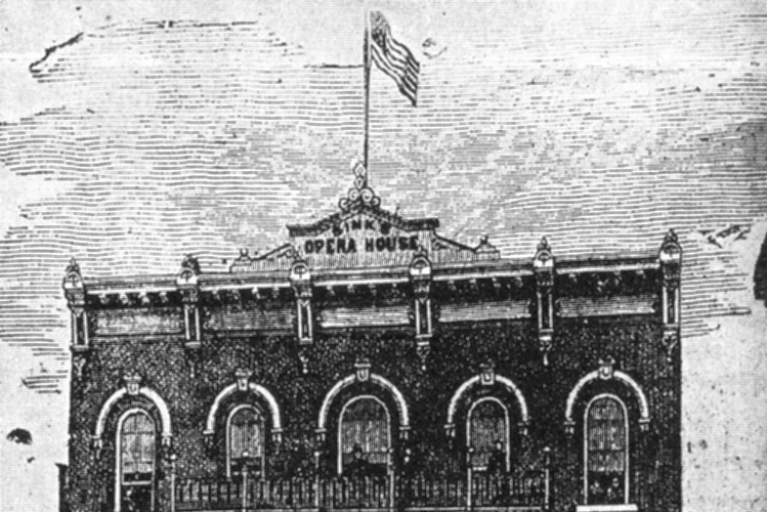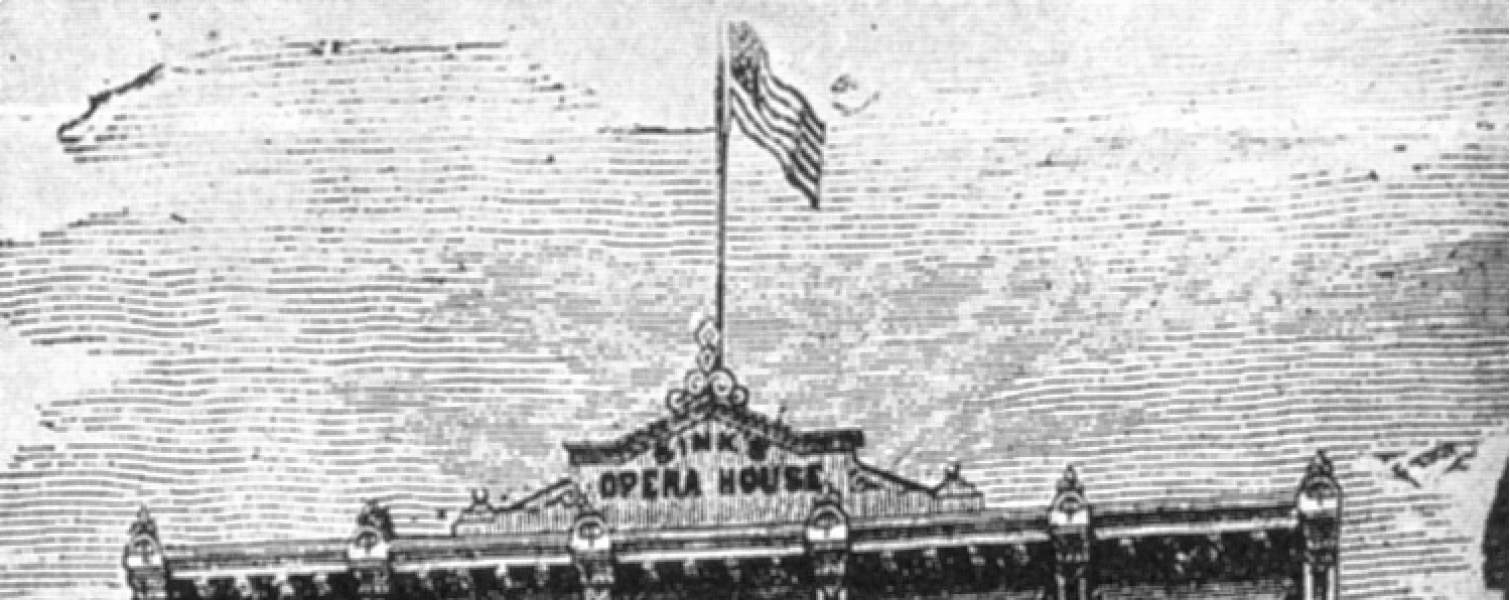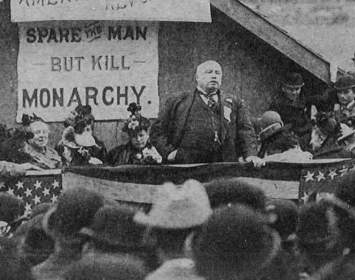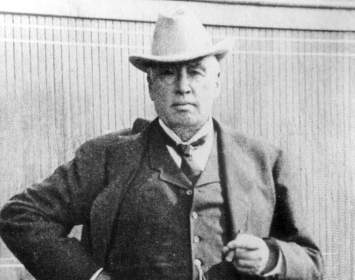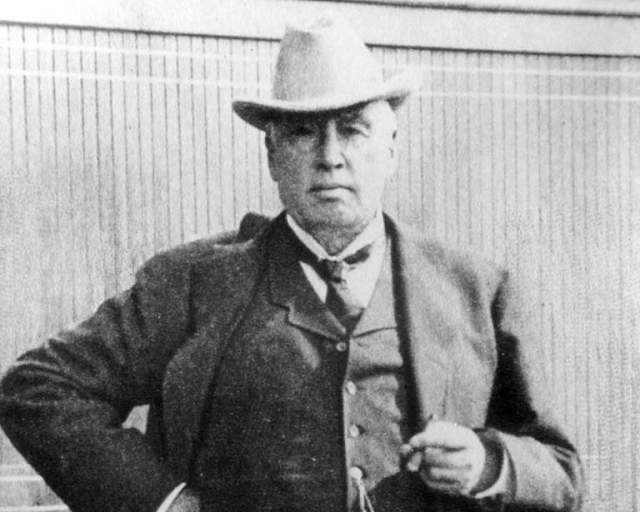1880 Ingersoll Lecture. On Monday, October 18, 1880, the famed freethought orator Robert Green Ingersoll delivered a political speech supporting the campaign of James A. Garfield, who would become the twentieth president of the United States. This oration took place at Sink's Opera House on 104 South Dominick Street, an address that no longer exists.
1885 Ingersoll Lecture. Ingersoll returned to Sink's Opera House on Tuesday, January 20, 1885, where he delivered his popular but controversial speech about religious matters, "Orthodoxy." So far as is known, that was Ingersoll's final visit to Rome, New York.
The Building and Site. Sink's Opera House stood on a part of East Dominick Street built on land that had formerly been part of Fort Stanwix. It was built by Andrew J. Sink and opened on the night of September 27, 1869. Strictly speaking, Sink's was a hall, not an opera house; its floor was flat rather than sloped, and instead of fixed seating it relied on movable benches. Yet it was Rome's first "proper stage" and became a beloved center for community gatherings as well as cultural events.
Out-competed by the Washington Street Opera House, which was some twenty years newer, Sink's ceased operations as an auditorium in 1902. One Professor Seagar operated a dancing academy in the building until June 27, 1904, when the structure burned down in a catastrophic fire that also claimed adjacent buildings and injured numerous firefighters. In addition, several community organizations that had met at the opera house for decades lost all their records.
It was decided not to rebuild the opera house. Various businesses moved onto the parcel, which soon became known as the Larkin Block. As it happens, the three-story Larkin Block also burned down on March 21, 1940. In contrast to the Opera House fire, the Larkin fire caused few injuries and did not damage adjacent structures.
When the National Park Service reconstructed Fort Stanwix in the 1970s, the block of Dominick Street on which Sink's Opera House had stood was demapped and made part of the fort's expanded grounds. West Dominick Street now ends at James Street; on the other side of the fort complex, East Dominick Street ends at Highway 46. The actual location of Sink's Opera House lies near the Marinus Willett Visitor Center on the Fort property (built in 2005).
Thanks to Arthur L. Simmons III, executive director of the Rome Historical Society, for research assistance.
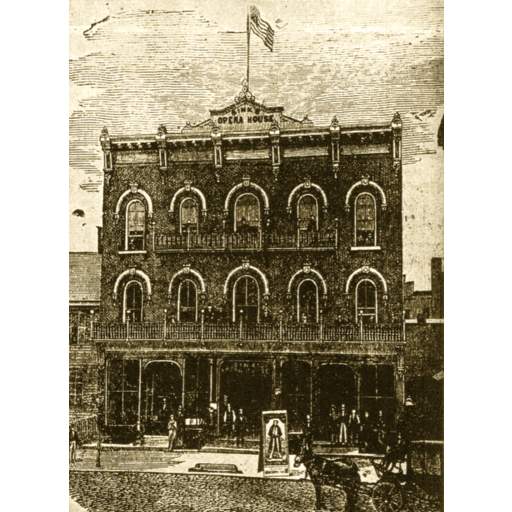
Sink's Opera House
Undated illustration depicts Sink's Opera House. Strictly speaking, it was a hall rather than an opera house, with a flat floor and moveable benches used for seating.
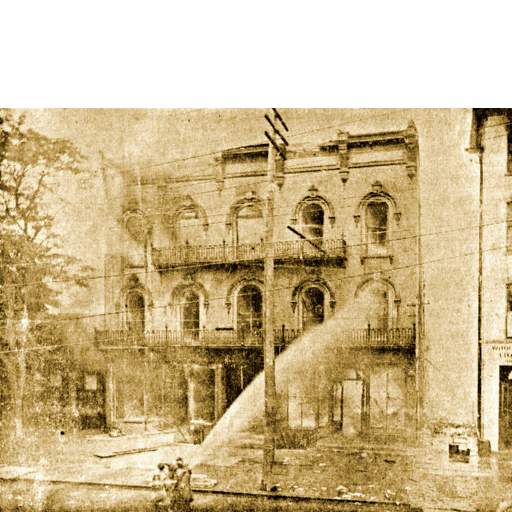
1904 Fire
Newspaper photograph of the June 27, 1904, fire that destroyed Sink's Opera House, several adjacent buildings, and the records of community organizations that had met on the property for many years.
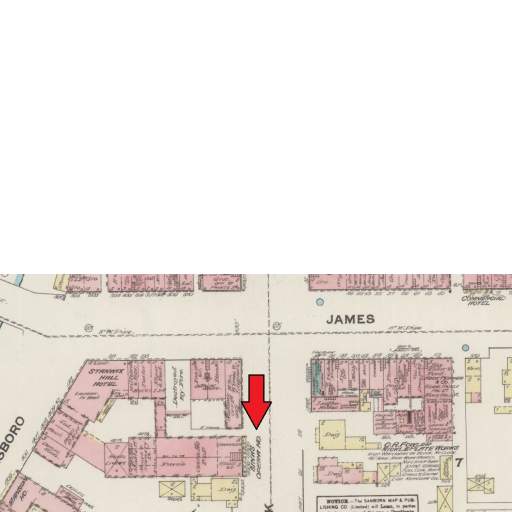
Sink's Opera House Location
This old insurance map shows the location of Sink's Opera House (red arrow). All properties below James Street in this view were razed as part of the Fort's reconstruction in the 1970s.
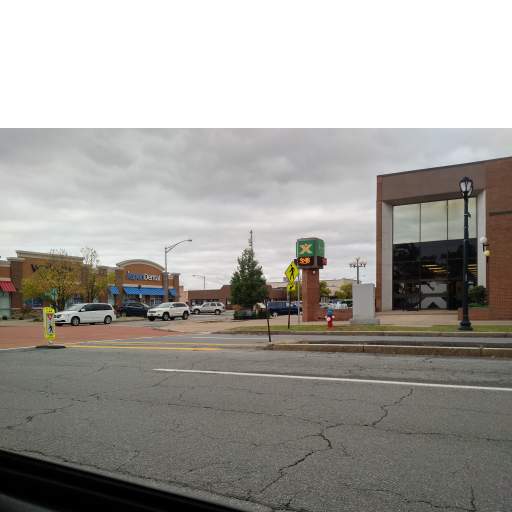
West Dominick Street
Modern-day West Dominick Street ends at James Street. The Fort Stanwix complex lies behind the photographer; the Marinus Willett Visitor Center stands behind and to the photographer's left.
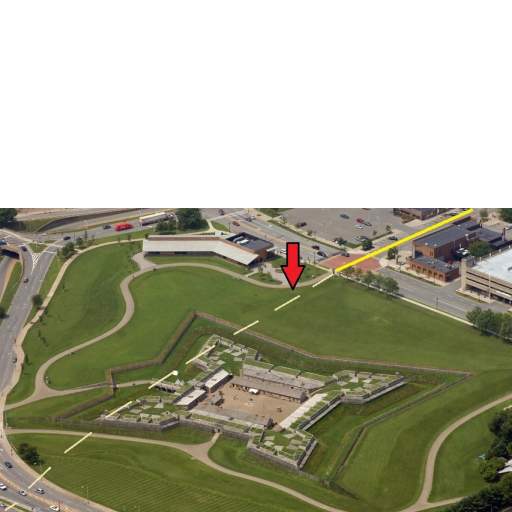
Fort Stanwix and East Dominick Street
Aerial view of the reconstructed Fort Stanwix. West Dominick Street enters from top right (wide yellow line) and ends at James Street. Prior to the fort's reconstruction, East Dominick Street roughly followed the dashed yellow line. (Today East Dominick ends at Highway 46, the expressway at bottom left of the picture.) The red arrow marks the approximate location of Sink's Opera House at 104 East Dominick. The building to the left of the arrow is the Marinus Willett Visitor Center, erected 2005.
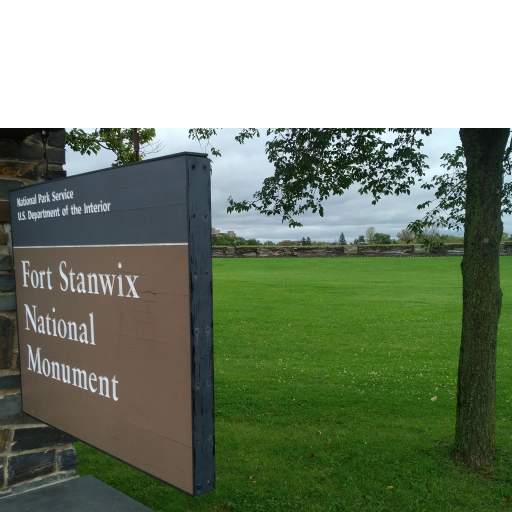
Fort Stanwix Sign and Stockade
A reconstructed wooden stockade is visible behind this sign at the fort entrance near James and West Dominick Streets.
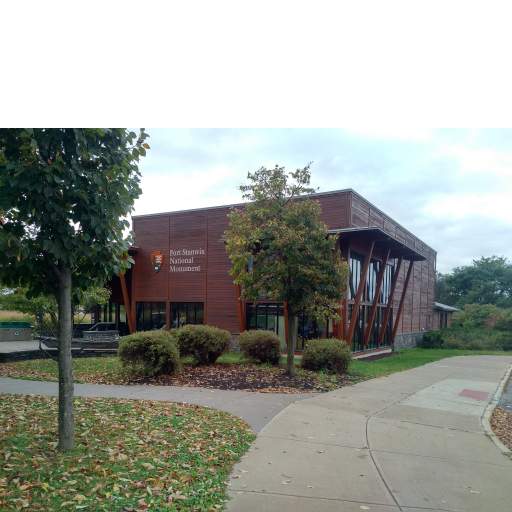
Marinus Willett Visitor Center
The Marinus Willett Visitor Center was added in 2005 to interpret the reconstructed Fort Stanwix and house historical materials. The location of the Sink Opera House would be about 100 feet to the left of the camera's position.
